2022 Mercedes-EQ EQE 350+ review: Stuck in the middle

SINGAPORE - For better or worse, the Mercedes-Benz star continues to sell very well in Singapore despite 2022 being the year of record-breaking COE prices and continuing supply chain disruptions. The automaker’s all-electric sub-brand, Mercedes-EQ, has already had a busy year with the launch of the headline-grabbing EQS sedan, EQB SUV and EQV MPV, and it is following through into 2023 with the upcoming EQS SUV as well.
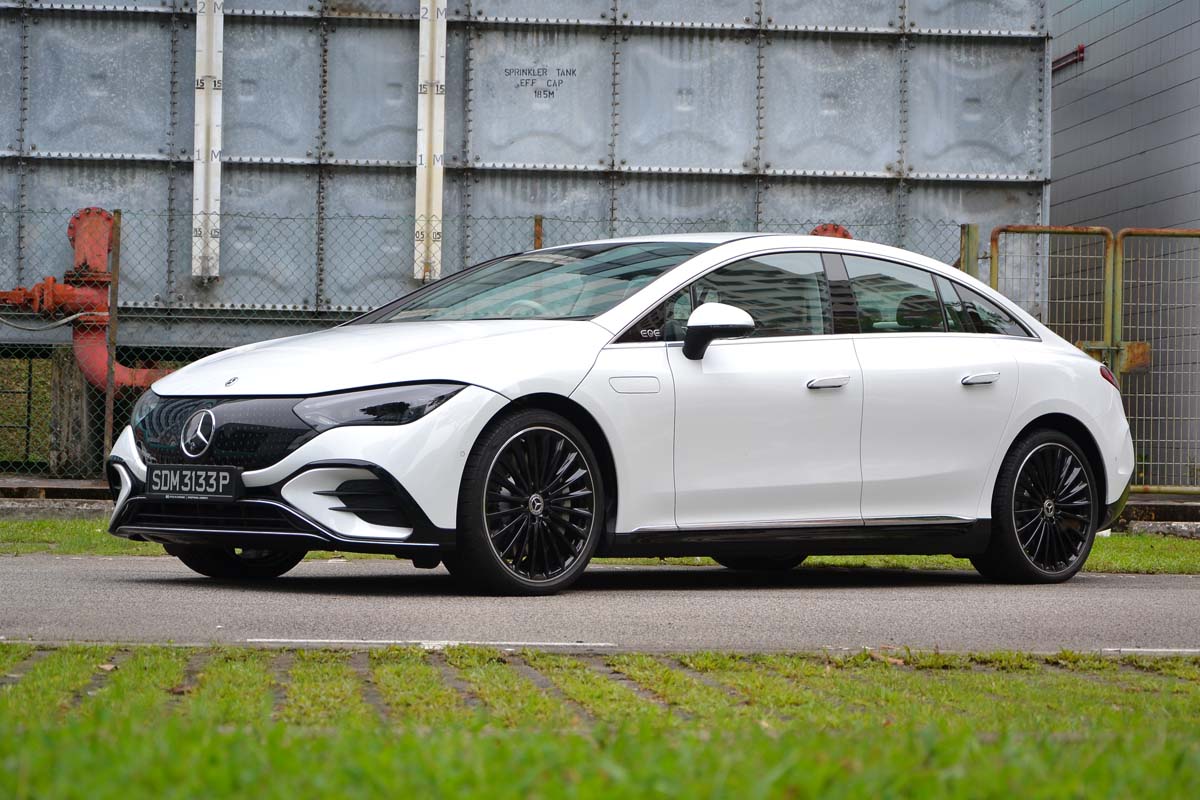
But the car seen here is the Mercedes-EQ EQE 350+, which, as you might have guessed from its name, is kind of the electric equivalent of the Mercedes-Benz E-Class sedan. It’s not, however, simply a ‘normal’ Mercedes-Benz modified to take electric motors and batteries.
The Mercedes-EQ range is on a completely different development path and the only similarity between the EQE and E-Class is the overall size, as both are the medium luxury sedans of their respective model lines.
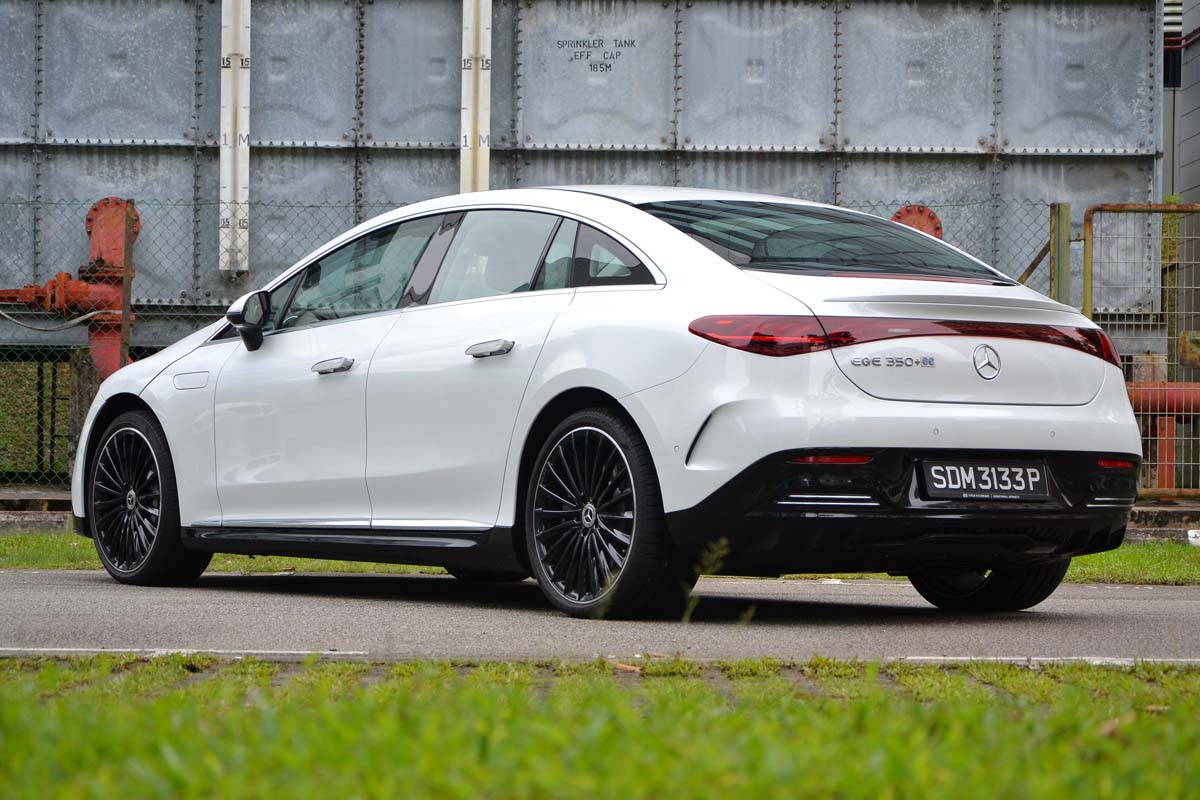
Visually, it’s very similar to the larger Mercedes-EQ EQS, with the curvy, sloping front and rear ends. Without the need for a large engine and its related accessories, the cabin occupies a lot more of the car’s overall footprint. The bonnet and tail is actually quite short in proportion to the car’s overall length, but you can hardly tell that because the overall shape is still very well balanced.

Mercedes has managed to really make the car’s outline work, as the EQE, like its larger EQS sibling, is one of the most aerodynamically efficient series production sedans that you can now buy. There’s no ‘intake grille’ on the nose, though the black panel with Mercedes-Benz stars within gives the illusion of there being one from afar.
The benefit of a more aerodynamic car is of course less air resistance, which ultimately results in more battery efficiency and longer ranges.

The test sample has a white leather cabin, which won’t be the ideal choice for long term use unless you really clean the upholstery weekly. Yet it’s a pretty example of what a lighter coloured interior can look, away from all the drab blacks and dark browns that we usually see.
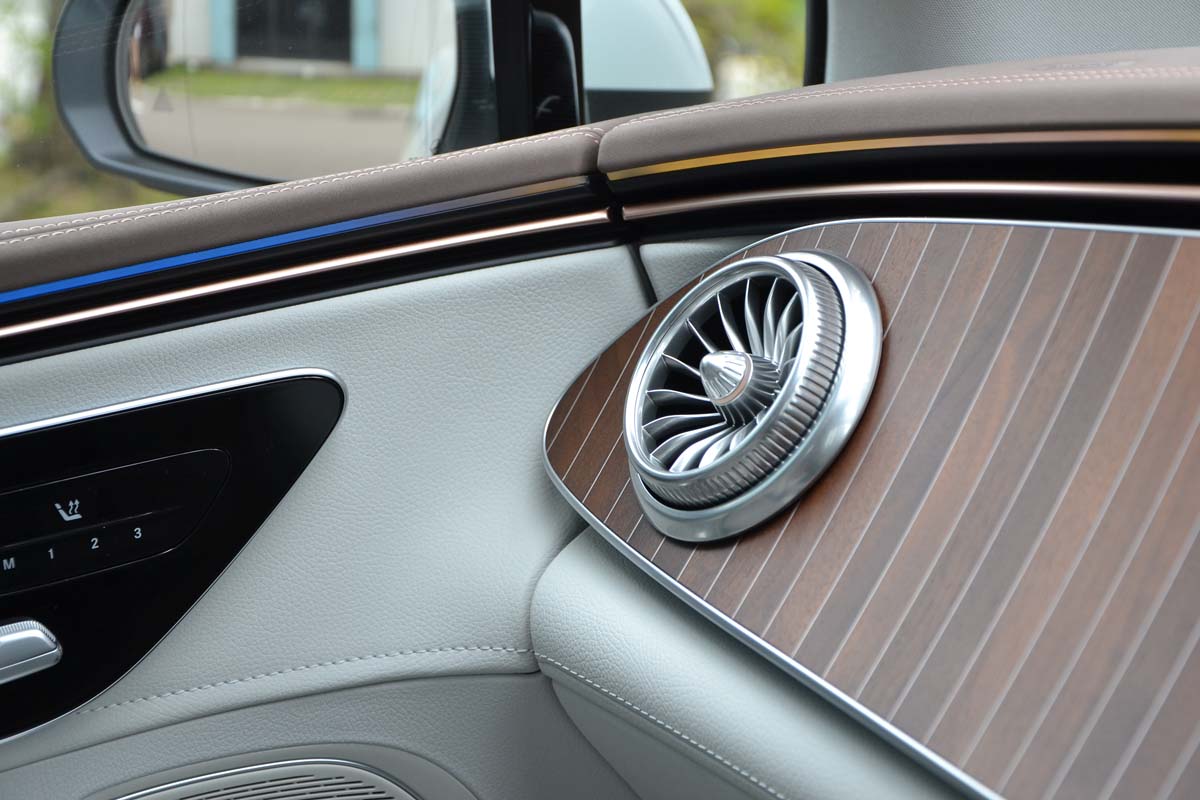
The similarity to the EQS extends even to the dashboard, which can be trimmed in a range of materials that you choose from the car’s options list and ringed with customisable ambient lighting. What cannot be fitted to the EQE 350+ is the huge hyperscreen panel that’s essentially a series of touchscreens spanning the whole dashboard. It can be found as standard equipment in the Mercedes-AMG EQS 53, as well as the AMG EQE 43.

However the expansive centre screen of the EQE, like those of other current-generation Mercedes cars, is already one of the biggest in the business and operates in the same way.
That extends to the swipe style controls on the steering wheel spokes, which is still a love-it or hate-it affair. The point is, would you rather be firmly pressing buttons or gently caressing a small touch pad like stroking a little kitten to adjust stuff?

Overall cabin size is great though the rear headroom is slightly compromised by the sloping roof. This compromise extends to the sightly narrow boot space, but at least the rear bench splits and folds forwards to lengthen the cargo area.

Passenger legroom is good however, and you get aircon vents in the second row, which is practically a must these days as even bread-and-butter cars like the Hyundai Avante have them.

The EQE 350+ is powered by a single electric motor situated at the rear axle and driving only the rear wheels. There’s a peak power output of 292hp, and it’s actually very quick by mainstream Singaporean standards. The 0 to 100km/h dash is written off in 6.4 seconds, which means that it matches the Volkswagen Golf GTI in a straight line sprint.
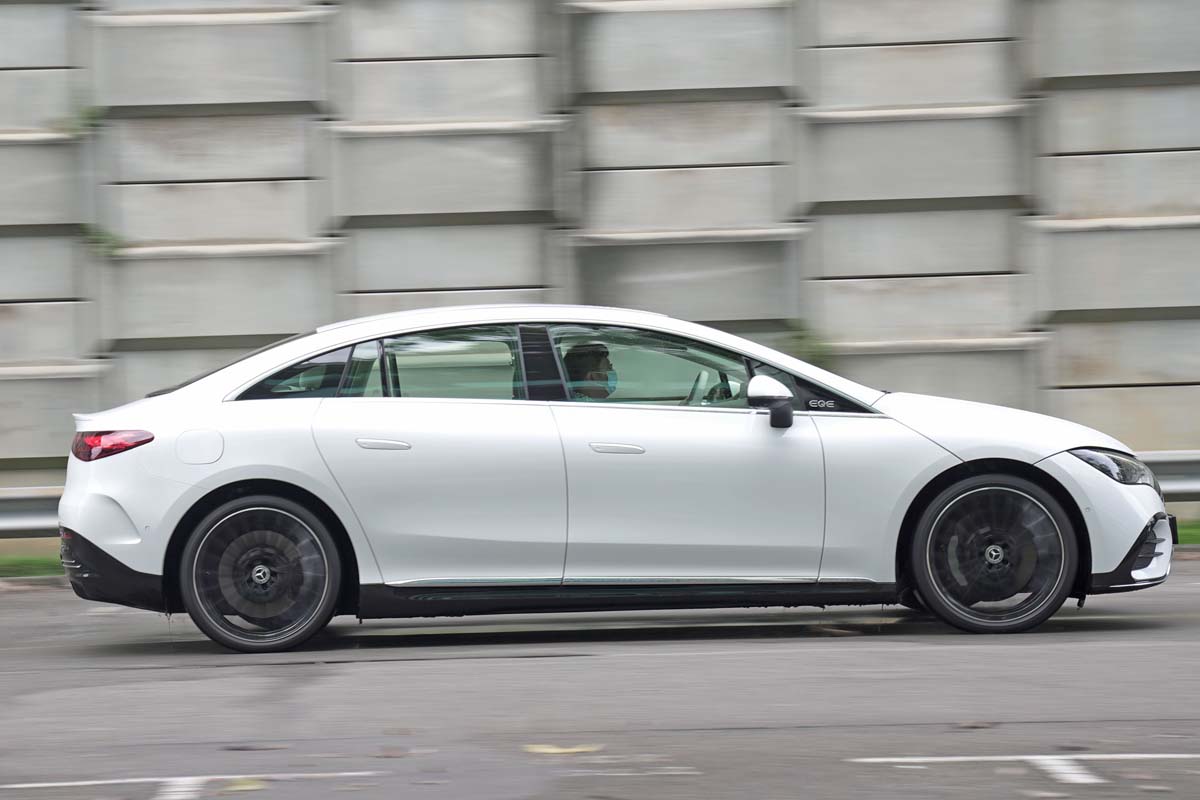
The instant power delivery of the electric motor, along with the fact that EVs typically only have one forward gear, make for a seamless forward momentum once you put your right foot down. It won’t match a Tesla Model 3 in a straight line, but then again, The Model 3 Performance’s 3.3-second century sprint is really for bragging rights and of very little use on public roads.

The EQE 350+ is a real smooth operator and very much what you would expect from a medium Mercedes-EQ sedan. It doesn’t have the AMG EQE 43’s aggro synthetic soundtrack piped in through the speakers, but after a couple of days you might just come to the conclusion that it’s not needed because all that whooshing noise just detracts from the car’s awesome Burmester sound system.

The rear-wheel driven setup of the car offers less ultimate traction than a twin-motor, all-wheel drive system, but as seen in BMW’s excellent iX3 which is also a rear-wheel driven car, the dynamic character of the vehicle really comes to the fore.
It’s not branded as a sports sedan because there’s the AMG version of the EQE for that, but there’s little to complain about how the car moves at speed. The 2.4-ton weight of the car will see it chewing through tyres more than lighter ICE cars for sure, which for a similar size typically weigh in at under 2.0-tons. But stopping power is excellent and when in adaptive regeneration mode the car can deccelerate quite smoothly when following behind another vehicle.
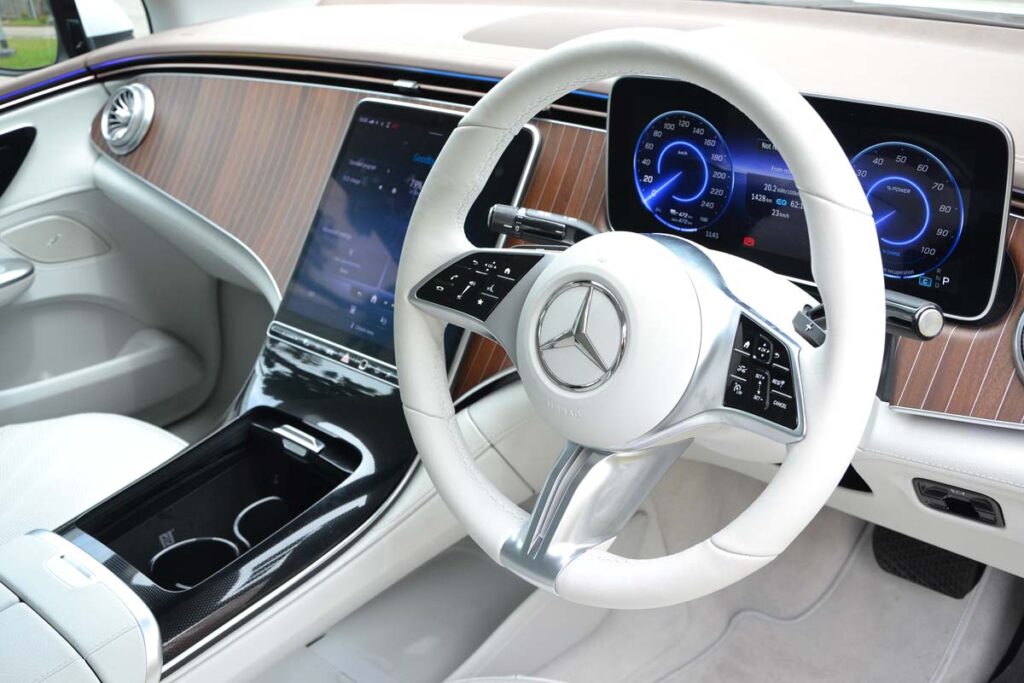
Its suite of active safety systems include adaptive cruise control, and under normal traffic conditions on the highway the car can really be left to its own devices and the car moves in your chosen lane semi-autonomously. Your hands still need to be on the steering wheel, or else an alarm tone sounds and the system is deactivated.

However, it’s worth nothing that the rear view through the window is quite… tiny. The rear window is a sliver of a slot, with three headrests in the way. They probably went ahead with it anyway since there are comprehensive reverse cameras fitted to the car.
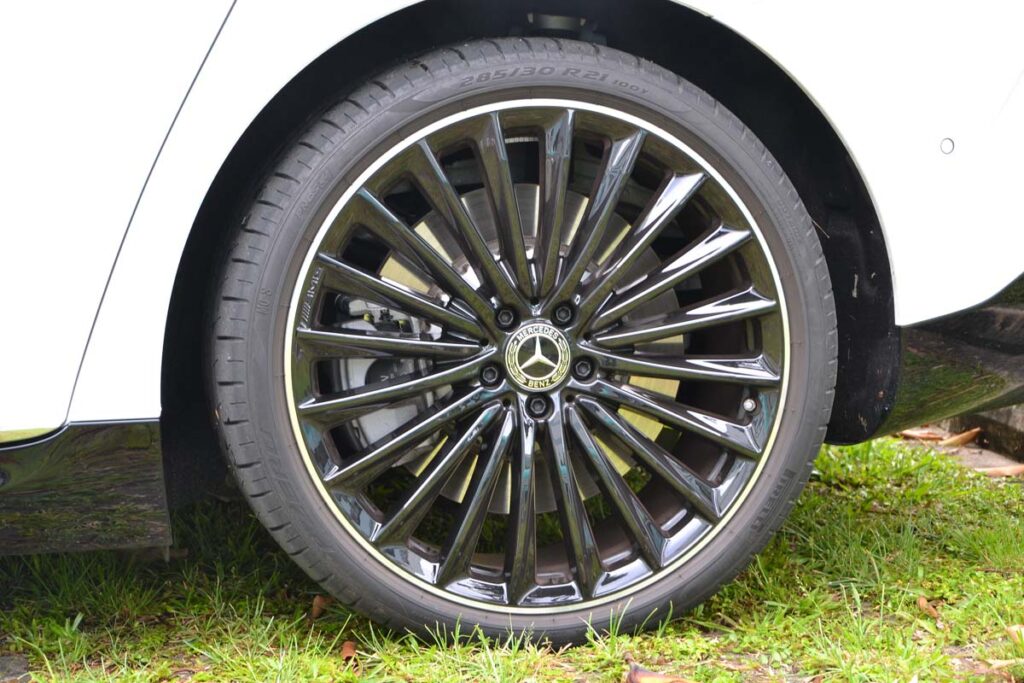
The car accepts charging rates of up to 170kW DC, which in everyday terms means that at maximum charge you’ll be completely recharged in under an hour. However most public fast charging stations use 50kW DC for now, though quicker ones are less than a year away. A home-based 11kW AC charger will top up the batteries from near-empty to full in under eight hours, which basically means an overnight charge.
Incidentally, if you’ve ever been baffled by exactly how long an ‘overnight’ time period is, as mentioned in everything from EV charging literature to cooking shows, it’s really eight hours.

While the EQE 350+ has a claimed power economy of 18.4kWh/100km, which will result in a real-world range of just under 500km, we found that in practice the car is actually more efficient than stated.
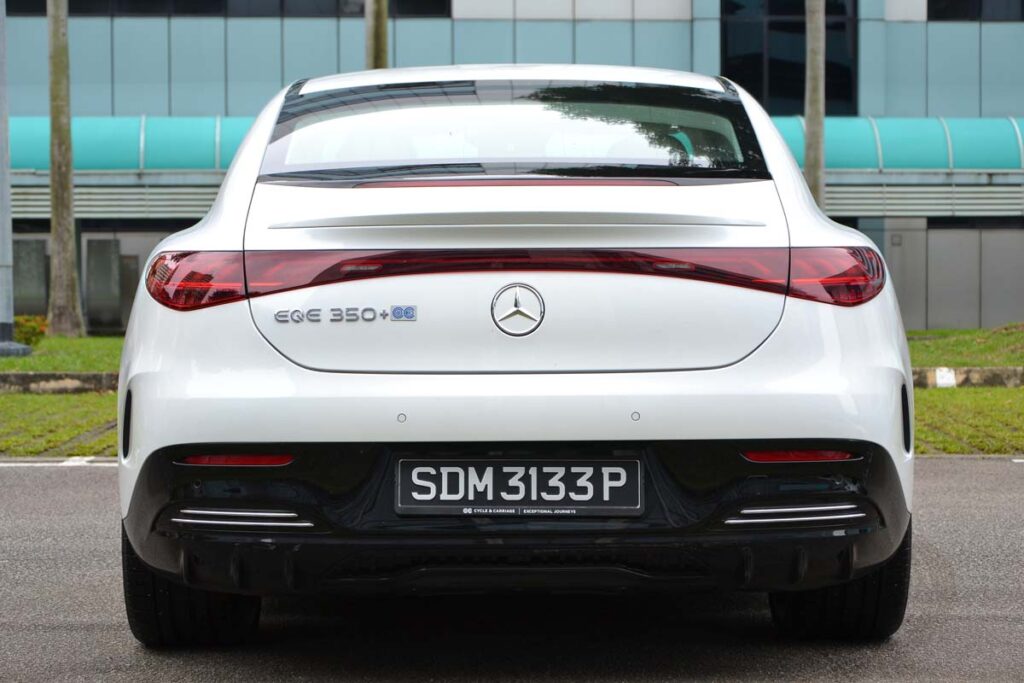
Mixed driving with a good amount of expressway jaunts will lower the energy consumption average to as low as 15.5kWh/100km, which pushes the car’s range to nearly 600km. On Singaporean roads, range anxiety is never going to be a problem.
With BMW’s all-electric version of a 5 Series sedan still ahead, The EQE’s main competition will come from the Audi E-tron range. These are not base model luxury cars. They are expensive, green cars that cost more than $400k each. Sure they may require a lot less maintenance than an ICE car, but consumables like tyres require replacing more often as the weight of the EV tends to wear them out a lot quicker.
ALSO READ: Mercedes-AMG reveals new S63 E, the most powerful S-Class yet
| Drivetrain type | Full electric |
| Electric Motor / layout | Single / rear |
| Motor power / torque | 292hp / 565Nm |
| Battery type /net capacity | Lithium ion, 90.6kWh |
| Normal Charge Type / Time | 11kW AC / 7.4 hours |
| Max Fast Charge Type / Time | 170kW DC / 32 mins 10 to 80 percent |
| Electric Range* | 492km average |
| 0-100km/h | 6.4 seconds |
| Top Speed | 210km/h |
| Efficiency* | 18.4 kWh/100km |
| VES Band | A1/ -S$25,000 |
| Agent | Cycle & Carriage |
| Price | S$415,888 with COE |
| Availability | Not Available |
| Verdict | Comfortable, luxurious, and quiet, there’s really no need to spring for a Mercedes-EQ EQS when this EQE does much of the same |